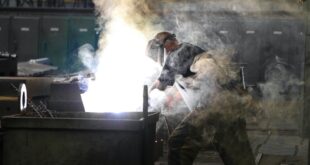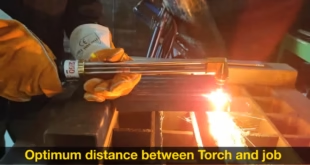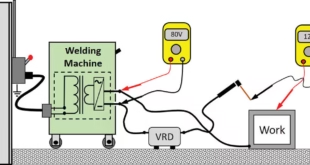Standards and Requirements for Welding Fume Control
Introduction
Understanding the Importance of Welding Fume Control
Welding is a common process used in various industries, but it can pose significant health risks if proper precautions are not taken. One of the major concerns in welding operations is the release of welding fumes, which contain harmful substances that can be hazardous to both welders and those in the surrounding environment. To ensure the safety and well-being of workers and the public, standards, and requirements for welding fume control have been established. In this article, we will delve into these standards and requirements and explore their significance in promoting a safe welding environment.

The Importance of Welding Fume Control
Effective welding fume control is crucial for several reasons. First and foremost, it protects the health of welders who are directly exposed to the fumes. Welding fumes contain various hazardous substances, such as metal oxides, gases, and particles, which can lead to respiratory problems, lung diseases, and even cancer if inhaled regularly or in high concentrations.
Furthermore, welding fumes can also pose a risk to other workers in the vicinity, as well as nearby communities. By implementing proper control measures, such as ventilation systems and Personal Protective Equipment (PPE), the dispersion of welding fumes can be minimized, reducing the potential for health issues among all individuals in the area.
Standards and Regulations for Welding Fume Control
To ensure the safety of welders and the public, several standards and regulations have been established that outline the requirements for welding fume control. These standards are developed and enforced by various organizations and regulatory bodies worldwide. Let’s have a closer look at some of the key standards and requirements in place.
1. American Welding Society (AWS) Standards
The American Welding Society (AWS) has developed a set of standards specifically focused on welding fume control. The AWS Fume Control Guidelines provide comprehensive guidance on controlling welding fumes, including recommended control measures, ventilation requirements, and best practices for fume extraction.
2. Occupational Safety and Health Administration (OSHA) Regulations
In the United States, the Occupational Safety and Health Administration (OSHA) plays a vital role in ensuring workplace safety, including welding operations. OSHA has established regulations that address welding fume control, such as 29 CFR 1910.134, which mandates the use of respiratory protection for welders in certain situations.
3. European Standards
In Europe, the European Committee for Standardization (CEN) has developed a series of standards known as EN ISO 15012. These standards provide guidance on methods for the measurement and assessment of welding fume emissions, as well as the effectiveness of control measures.
4. National Standards and Regulations
Many countries have their own national standards and regulations regarding welding fume control. These standards often align with international guidelines while also considering specific regional factors. It is crucial for welding operators to familiarize themselves with the relevant standards and comply with them accordingly.
Welding Fume Control Measures
To meet the standards and requirements for welding fume control, various measures can be implemented. These measures are aimed at reducing the release and exposure to welding fumes, creating a safer working environment. Here are some effective control measures:
1. Local Exhaust Ventilation (LEV) Systems
Local exhaust ventilation systems, such as fume extractors and hoods, are designed to capture and remove welding fumes at the source. These systems effectively minimize the dispersion of fumes into the surrounding air, providing direct protection to the welder and other individuals nearby.
2. General Ventilation
In addition to local exhaust ventilation, general ventilation systems help to improve air quality in the entire welding area. General ventilation involves the use of fans or natural airflow to circulate fresh air and remove contaminants. This helps to dilute the concentration of welding fumes in the workspace, reducing the overall exposure to harmful substances.
3. Personal Protective Equipment (PPE)
Personal Protective Equipment is essential for welders to protect themselves from welding fumes. PPE may include respiratory protection, such as respirators or masks specifically designed for fume control. Additionally, welders should wear protective clothing, such as gloves and coveralls, to minimize direct contact with fumes and particles.
4. Substitution of Materials
In some cases, it may be possible to substitute materials or processes that generate fewer hazardous fumes. For example, using low fume-emitting consumables or employing alternative welding methods, such as laser welding, can help reduce the generation of harmful fumes.
5. Training and Education
Proper training and education play a crucial role in ensuring that welding operators are aware of the hazards associated with welding fumes and understand the necessary control measures. Training programs should cover topics such as proper ventilation techniques, PPE usage, and the importance of maintaining a clean and safe working environment.
6. Regular Maintenance and Inspection
Regular maintenance and inspection of welding equipment, ventilation systems, and other control measures are essential to ensure their effectiveness. Equipment should be inspected for proper functioning, and filters in ventilation systems should be regularly cleaned or replaced to maintain optimal airflow and fume capture.
7. Monitoring and Testing
Regular monitoring and testing of welding fume levels can help identify areas where control measures may need adjustment or improvement. Air sampling and analysis can provide valuable data on fume concentrations, allowing for necessary modifications to control strategies.
FAQs about Standards and Requirements for Welding Fume Control
Why are standards and requirements for welding fume control necessary?
Standards and requirements for welding fume control are necessary to protect the health and safety of welders and those in the surrounding environment. They provide guidelines and best practices for controlling welding fumes and minimizing exposure to hazardous substances.
Who is responsible for enforcing welding fume control standards?
Enforcing welding fume control standards is the responsibility of various organizations and regulatory bodies, such as the American Welding Society (AWS), Occupational Safety and Health Administration (OSHA), and European Committee for Standardization (CEN).
What are the consequences of inadequate welding fume control?
Inadequate welding fume control can lead to serious health issues, including respiratory problems, lung diseases, and even cancer. It can also result in compliance violations and legal consequences for employers.
What are some common control measures for welding fume control?
Common control measures for welding fume control include local exhaust ventilation (LEV) systems, general ventilation, personal protective equipment (PPE), substitution of materials, training and education, regular maintenance and inspection, and monitoring and testing.
Are there specific regulations for welding fume control in different countries?
Yes, many countries have their own specific regulations regarding welding fume control. These regulations may align with international standards while also considering regional factors.
How can welders ensure compliance with welding fume control standards?
Welders can ensure compliance with welding fume control standards by familiarizing themselves with the relevant regulations, following recommended control measures, using proper ventilation and PPE, and regularly maintaining and inspecting equipment.
Conclusion
Standards and requirements for welding fume control are essential for safeguarding the health and well-being of welders and those exposed to welding fumes. By implementing effective control measures, such as local exhaust ventilation systems, general ventilation, personal protective equipment (PPE), and proper training, welding operators can minimize the release and exposure to welding fumes. It is crucial for welding operators and employers to adhere to the established standards and requirements for welding fume control. By doing so, they not only prioritize the health and safety of their workers but also ensure compliance with regulations and avoid potential legal consequences.
The standards and requirements for welding fume control are vital for maintaining a safe working environment in welding operations. The implementation of proper control measures, including local exhaust ventilation systems, general ventilation, PPE usage, and regular maintenance, plays a crucial role in minimizing exposure to welding fumes and protecting the health of welders and those in the surrounding environment. By following these standards and requirements, welding operators can create a safer workplace, reduce the risks associated with welding fumes, and promote the overall well-being of their employees.
 Welding of Welders All about Welding and Welders
Welding of Welders All about Welding and Welders



